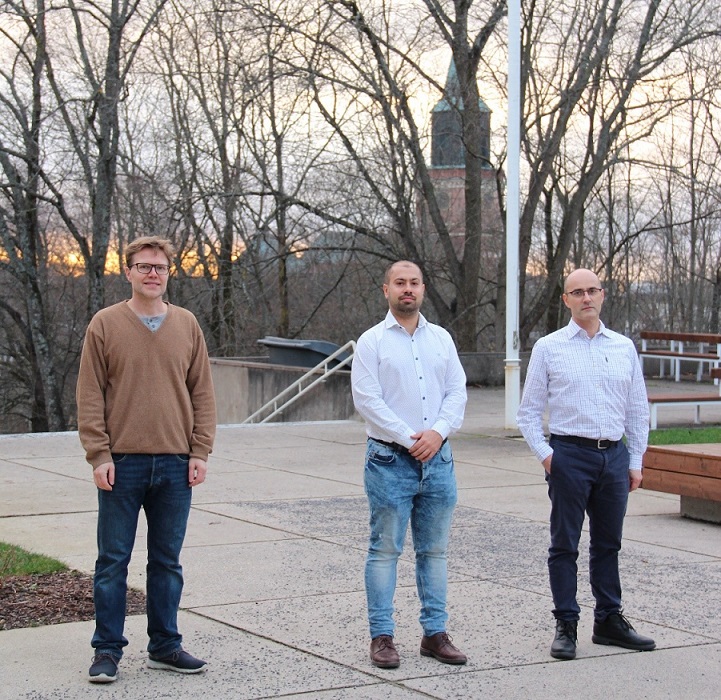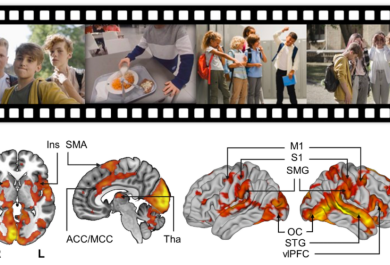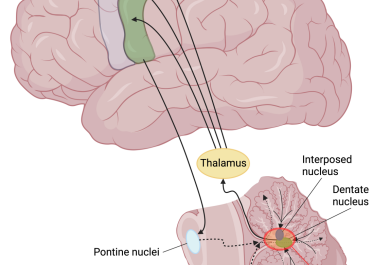Ángel García de Lucas Investigates Neurobiological Mechanisms behind Schizophrenia
Postdoctoral Researcher, Dr Ángel García de Lucas has received Marie Curie Fellowship for the project GABARPET with the objective to gain deeper insight on the biology of schizophrenia.

The University of Turku has received EU Horizon funding for the GABARPET project which aims to develop new molecular imaging tools for mapping the molecular diversity of gamma-aminobutyric acid (GABA) receptors in different mental states. The project is led by Dr Ángel García de Lucas, who has received Marie Curie Fellowship for the project.
- The Marie Curie Fellowship is a great opportunity for me to develop my own project together with a great team of professionals whose support help me achieve new skills, he says.
He has a multidisciplinary background having studied molecular biology and biophysics, but also psychobiology and cognitive neuroscience.
- Working with very different techniques and research areas has given me extensive background knowledge, which helped me create GABARPET project as a synergic idea combining my eclectic research experience and research interest, he says.
As a doctoral candidate, he conducted research in the fields of molecular imaging and cancer, where he got familiar with immunoPET, the development and use of radiolabeled antibodies for positron emission tomography (PET) in cancer models. Ultimately, his doctoral studies led him to Turku, as his PhD supervisor, Dr Miguel Ángel Morcillo, had met Docent Francisco López Picón, one of his supervisors here at the University of Turku, at a conference.
- Miguel Ángel knew of my interests towards Neuroscience and through him, I contacted Francisco who helped me develop the research idea. Francisco has a professional profile very similar to the one I would like to develop in the future, molecular imaging and neuroscience. I contacted him, exposed my ideas, and he was very supportive of the project. He helped me to discover all the potential that the University of Turku can offer for my project, such as antibody engineering lab, GABAA receptors lab, electrophysiology labs, animal research and PET research. Owing to the help of my supervisors, Francisco and Associate Professor Urpo Lamminmäki, I was able to get the Fellowship and start the project, García de Lucas tells.
Discovering the Biology of Schizophrenia
Earlier evidence suggests that changes in the GABAA receptors expression is changed in various neurological diseases, including schizophrenia. Schizophrenia as a diagnosis is very complex, because there are no specific biomarkers, distinctive biological or biologically derived indicators that would indicate the disorder.
- I focused the project on schizophrenia because I think that it is a very hard disease without clear biomarkers, and I have people close to me with this terrible illness, he reveals.
The scientists of GABARPET are developing PET probes that are able to measure quantitative information on specific GABAA receptor subunits expression in patients. The immuno-positron emission topography (immunoPET) is based on antibody imaging, but the possibilities of using it in neuroimaging are limited due to the intact antibodies that cannot enter the blood brain barrier in healthy conditions.
- The brain is hidden behind the blood brain barrier, which protects it against toxins and pathogens. Antibodies, in general, do not cross this barrier. However, an important research is conducted in the field of brain drug delivery, but only a few groups have applied this knowledge to immunoPET approach. When I started to think about this project, I thought that immunoPET would be an interesting technique to explore the brain. However, almost all research in the field of immunoPET is currently done on cancer, he says.
According to García de Lucas, GABAA receptors are formed by the confluence of 5 different subunits, but current PET tracers are unable to distinguish changes in specific subunits. In other words, the importance of the different classes of GABAA receptors in neurological and mental disorders are known, but there is a lack of specific PET tracers that can differentiate between the classes in humans.
- I thought of the idea to develop small antibody fragments that can cross the blood brain barrier and differentiate among the different GABAA receptor classes with the idea of using this knowledge to look for new biomarkers for mental and neurological disorders, he says.
The object of the project is to gain fundamental insight into the biology of schizophrenia and improve its diagnosis. The project is funded for 3 years.
Living and working in Finland
García de Lucas has been living in Finland for two months now and finds it easy to adjust to the Finnish society.
- Finnish people have been very friendly. Besides, the high level of English among Finnish people facilitates the integration of my family and myself.
In terms of working environment, he is excited to work here taking into account that science and technology innovation form an important part of the Finnish economy.
- In fact, the Turku PET Centre is one of the world leaders in molecular imaging. In this sense, this project is a great opportunity to learn from one of the best environments in PET that will help me in developing professionally in the future. In addition, I am working with a great team of people
|
Who? Dr Ángel García de Lucas
|

Support Research and Science
Text and photo: Elina Laiho



